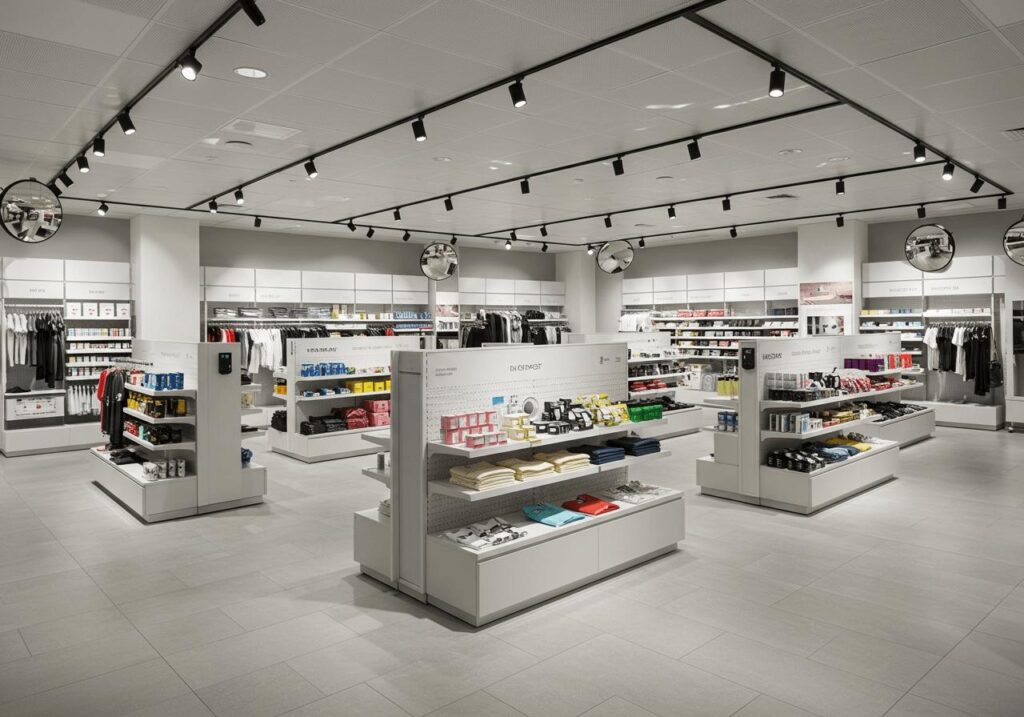Simple Ways to Prevent Shoplifting in Your Store
Shoplifting, a specific form of theft, costs retailers billions annually, impacting profits and forcing businesses to implement complete prevention strategies. Under UK law, specifically the Theft Act 1968, theft is defined as dishonestly appropriating property belonging to another with the intention to permanently deprive the other of it (Section 1 of the Theft Act 1968). Understanding retail theft patterns and implementing proven techniques can significantly reduce losses from stealing items.
Effective shoplifting prevention combines store design, employee training, technology (CCTV, security tags), and customer engagement. These strategies help combat shoplifting and reduce retail crime while maintaining a positive shopping experience.
Key Takeaways
- Retail theft causes significant financial loss resulting in billions lost annually (US figures cited, but a major issue in England and Wales too).
- Strategic store layout with clear sight lines reduces opportunities for shoplifters to conceal items.
- Employee training can significantly reduce losses associated with shoplifting.
- Modern security tech like CCTV and AI helps identify and deter potential offenders.
- Balancing security with customer experience is crucial for preventing theft and maintaining sales.
Shoplifting Crisis: Understanding the Threat to Your Business
The retail industry faces a crisis with staggering losses due to shoplifting. US retail theft losses hit $112.1 billion in 2022. While these are US figures, retailers report similar challenges globally, including in the UK. This financial loss impacts businesses daily.
Shoplifting tends to be widespread. The average incident value has increased significantly. This growing threat includes casual opportunists taking items for personal use and organised retail crime rings stealing goods for resale, often on the black market. Shoplifting increases have been noted since the pandemic in some areas. Retailers must adopt full anti-shoplifting strategies.

Train Your Team to Be Your First Line of Defense
Employees are a powerful deterrent against shoplifting when trained. Training helps staff identify suspicious behaviours associated with shoplifting (e.g., attempts to distract staff, concealing items).
Effective training covers:
- Recognising signs of potential theft.
- Understanding store policies and legal boundaries (e.g., when they can legally detain or apprehend a suspected shoplifter).
- Proactive customer service – engaging customers makes potential offenders feel watched.
Regular refreshers keep skills sharp. Confident staff are key to the anti-shoplifting strategy.
Design Your Store with Security in Mind
Store layout can deter or invite theft. Cluttered stores with blind spots see higher shoplifting rates. Maximise visibility.
Key design principles:
- Clear sight lines.
- High-value items near staff/ CCTV.
- Convex mirrors.
- Low display heights.
Position checkouts near exits as a surveillance point. Place valuable items away from exits. Assess your layout for vulnerabilities. Small changes can improve visibility and deter shoplifters. Security guards or systems add further layers.
Leverage Advanced Security Technology
Modern tech offers powerful tools to combat shoplifting. AI-powered CCTV systems show promise in reducing retail crime.
Essential technologies:
- High-quality CCTV strategically placed.
- Electronic Article Surveillance (security tags) and gates.
- RFID tracking.
- Entrance alerts.
- Analytics to identify patterns.
Retailers are increasing tech budgets (2023/2025 plans indicate this trend). These investments reduce shrinkage. For smaller budgets, visible measures like CCTV and basic alarms are still effective deterrents. Combine visible and less obvious tech for best results.
Secure High-Value Merchandise Effectively
Securing merchandise (locking high-value items) is common but must balance protection and sales. This applies to items easily concealed or targeted for financial gain.
Effective security:
- Identify high-theft items.
- Use secure displays/locking pegs.
- Implement security tags that alarm if tampered with or removed without paying.
- Clear signage for accessing items.
- Staff available to assist quickly.
Maintain protection without frustration. Poor service for locked items loses sales. Train staff for prompt assistance. Secure storage areas for backup inventory.
Create a Customer-Focused Security Environment
Effective anti-shoplifting strategies create a secure yet welcoming environment. Customer engagement reduces theft risk without negativity.
Customer-focused approach:
- Staff greet and check in with customers.
- Maintain employee presence.
- Build community relationships (shoppers may report suspicious activity).
- Positive security signage.
This taps into psychology – feeling noticed deters potential shoplifters less likely to offend. Attentive service enhances the experience for legitimate customers.
Implement a Complete Anti-Theft Strategy
Successful retailers use integrated, multi-layered approaches. Combine training, design, tech, merchandise security, and engagement.
Elements include:
- Clear protocols for handling suspected shoplifting incidents (involving security guards or staff).
- Regular reviews and updates based on reported shoplifting patterns.
- Training on legal and safe intervention.
- Coordination with local police and retail security networks.
Document policies clearly. Improper handling can lead to legal issues. Regularly assess strategies, tracking shrinkage (loss of stolen goods), etc. Compare against industry benchmarks. Note: UK law has specific considerations for low-value shoplifting (under £200) often dealt with under the Anti-social Behaviour, Crime and Policing Act 2014, which may affect decisions on whether to involve police or prosecute. The decision often weighs the harm (financial loss, impact on retail workers) against the interests of justice and the culpability of the offender. This guide is not a complete legal analysis.
Sources
Council on Criminal Justice – Shoplifting Trends: What You Need to Know
GetSafeAndSound – Shoplifting Statistics
WTW – Retail Theft and Prevention












